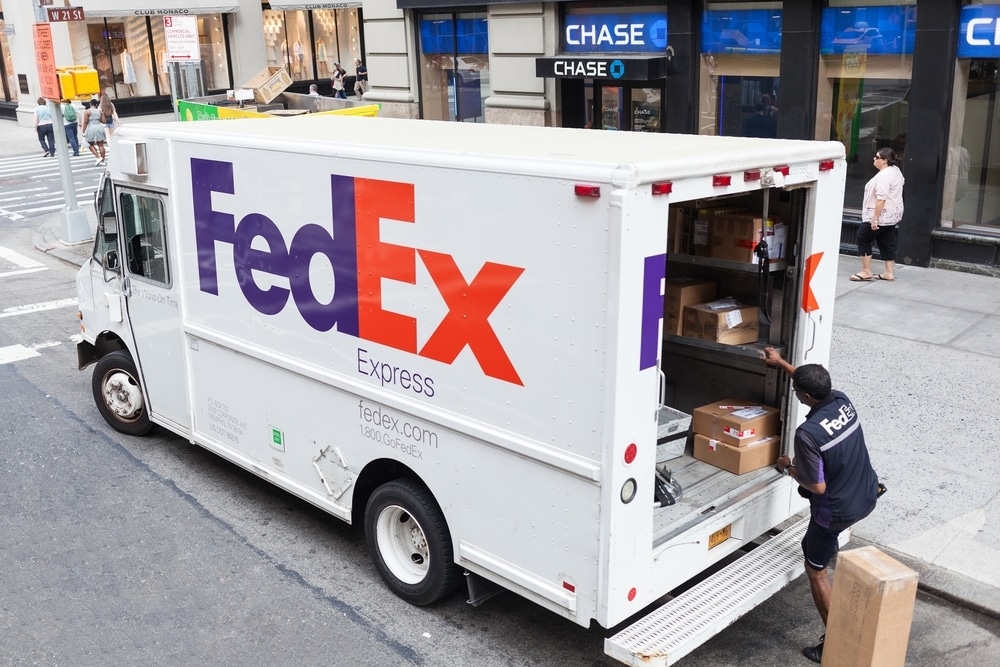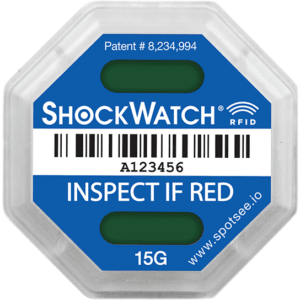RFID Shipping Solutions Take Hold at Top Businesses
FedEx says the future of the supply chain includes RFID shipping solutions. CIO Rob Carter made his pronouncement in 2019, touting the RFID tags that feed information — such as temperature, impact, and vibration — into blockchain to create a secure, traceable information system for international commerce and logistics.
Executives at WalMart and Procter & Gamble are realizing the potential of RFID shipping solutions, too, despite their earlier, failed applications.
What’s different about RFID applications today, industry leaders say, is that it now complements other innovations. Ancillary technologies are mature enough that they are helping RFID tags achieve their true potential.
Blockchain and IoT within RFID Supply Chains
Blockchain leads that pack in driving even more innovation to RFID supply chains. As governments increasingly expect manufacturers and carriers to more tightly secure the chain of custody of the goods they ship, a single standardized ledger makes sense. On the physical side of things, IoT, the much ballyhooed Internet of Things, is proving its worth in the form of widespread communications networks that support real-time alerts. WiFi, cellular, satellite, Bluetooth, and RFID are widely available options used by cargo-monitoring technologies.
When combined, RFID, IoT, and blockchain technologies can provide unprecedented visibility into the supply chain as well as previously-unheard-of security. To be clear, these technologies don’t make cargo diversion or counterfeiting impossible, but they do make it so hard that criminals will look elsewhere for less protected targets.
RFID shipping solutions are accurate, too. A study by GS1 and Auburn University found that RFID tags were 99.99% accurate. For barcodes, the accuracy rate was only 31%.
Passive RFID Tags with Impact Indicators
SpotSee’s ShockWatch® RFID solution provides both visibility and impact recording in the form of a simple tag that is read automatically each time it passes a passive UHF RFID reader. This means the tag is read when it leaves your loading dock, when the carrier (maybe a trucker) receives it at its facility; when it leaves that facility; when it is handed off to an air cargo, marine or rail carrier; when it is offloaded at the next port; loaded into another carrier; when it reaches your distribution center; and, finally, when it reaches your facility. Throughout transit, the presence of the SpotSee ShockWatch RFID tag helps to deter, detect, and diagnose damage. The number of handoffs is irrelevant.
What matters are the reads. Every time a tagged asset is scanned by the RFID reader, it logs its condition in the connected enterprise resource planning (ERP) software or warehouse system.
As a result, you’ll know not only where the cargo is, but whether it has experienced impacts that could damage it. And, if it has, you’ll know where the event occurred. Because ShockWatch RFID indicators are tamperproof, you can hold the right party responsible.
Ongoing Supply Chain Innovation Through RFID
Modern RFID shipping solutions have overcome one of the big challenges the technology faced when it was introduced nearly 20 years ago. Today, the analytics engines and software tools – enterprise logistics planning, inventory management system, warehouse management systems, etc. – are in widespread use. They can handle information in real time, scanning hundreds of items at once, entering them into the management system, and flagging items that may have been damaged.
While the data generated by RFID monitors is important for managers, it’s usable on the warehouse floor, too. Like many of SpotSee’s impact monitors, these RFID indicators turn red when they experience shocks beyond certain predetermined thresholds. That means it’s also clearly evident to handlers. This “belts and suspenders” approach helps ensure that certain items are set aside for inspection.
Passive RFID tags are popular in a wide range of environments, from factories to retail operations. As blockchain applications become more common, they can team with passive RFID to reduce or eventually remove the need for human intervention in tracking goods and issuing payments, executives say. For example, by using RFID to track the movement of goods throughout the supply chain, these indicators also could be used to trigger payment for outbound items as soon as they are delivered to your customer.
Today, RFID supply chains hold a world of possibilities for better logistics management, particularly when coupled with other advanced technologies like blockchain and IoT, as well as tried-and-true impact indicators. Business leaders have taken notice. Have you?
Learn more about ShockWatch RFID and its uses in supply chain technology. Or, get in touch via the form below to schedule an RFID supply chain consultation.










